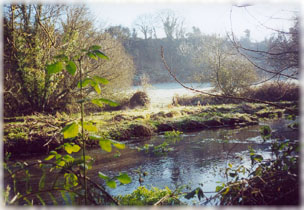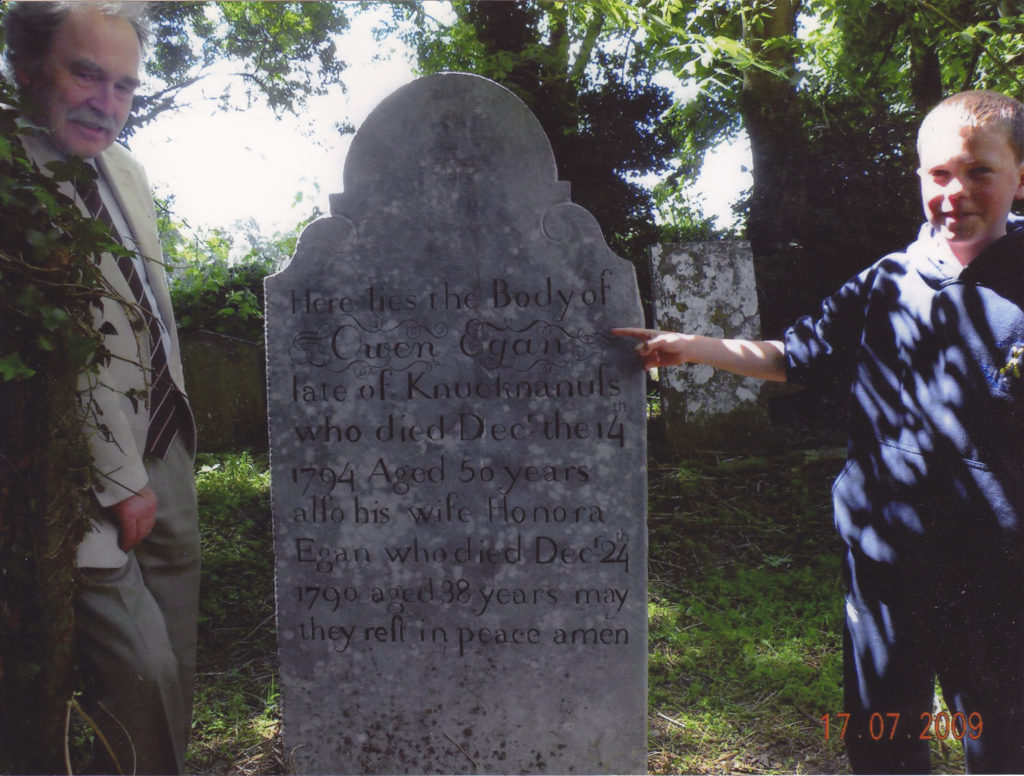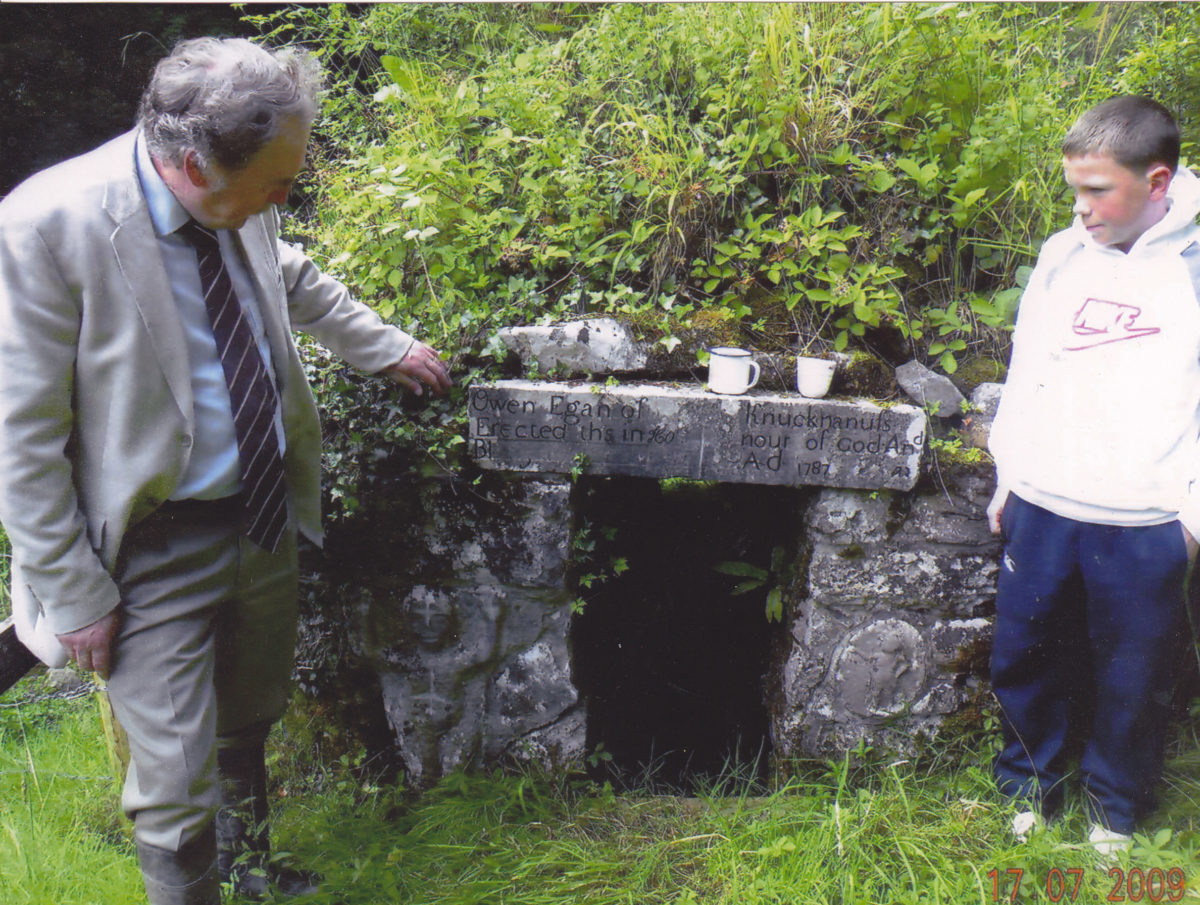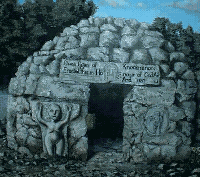Castlemagner holy well, also called St Brigit’s Well, like most Holy Wells in Ireland traces its origins back to pre-Christian druidic religion and ritual, when wells were known as sacred wells. They were used by the celtic druids for pagan rituals and ceremony. Celtic pagans believed water to be a source of life. It is therefore reasonable to assume that pagan worship at this well could stretch back four thousand years.
The original months for doing “rounds” was February. This would coincide with the druidic feast of Imbuloc which would indicate that Castlemagner was a sacred well.
When St. Patrick arrived in Ireland in 432 AD and converted the people to Christianity, sacred wells and rituals associated with them were adapted into Christian worship and ritual. Consequently, Druidic sacred wells became Christian holy wells. It is generally believed that Castlemagner holy well was in the Christian era dedicated to St Brigit of Kildare (Mary of the Gaels) 450-522 AD.
When the parish of Castlemagner became a protestant parish in 1591, mass was celebrated at the holy well every Saturday until 1658 and so got the name Sunday’s Well.

In 1658, Captain William Bretridge became the owner of Magner’s Castle together with its 20,000 acres under the Cromwellian confiscation. He banned the offering of mass at the holy well, but the local Catholic people together with their priest used the Ceatra river to get to the holy well. They stood in the river with their priest while mass was being offered at the well. This was possible at the time as all rivers under English law were deemed common property, with equal rights of access to all.
Captain Bretridge overcame this be digging very deep holes along the river bed from the present Ardoyne to the holy well which the locals were unable to cross. This put a stop to mass at the holy well
Under the penal laws holy wells were seen as a threat to Protestantism and rounds to the holy wells were regarded by the local church as a source of ridicule.
In 1704 AD the local landlord gave permission to build a Catholic church (Mass house) in Coolavaleen. The first church in the local cemetery (built circa 900 AD) was dedicated to St Brigit and since 1591 AD was used by Protestants. The local Catholics dedicated their new church to the mother of God and called it St Mary’s and also dedicated the holy well to St Mary. They changed their month of rounds to May. This still remains the same.
A family called Egan lived in Kocknanaus in 1787 AD. One of the family’s son, Owen (born in 1744 AD) got polio leaving him totally crippled. Their house was about 150 metres south of Marybrook bridge. When the weather was dry and warm, Owen’s family would take him on a seat to the roadside to meet and talk to passers by.
One day in the summer of 1787, while seated, Owen saw a man with a walking stick cross over the bridge and walk slowly towards him. Owen greeted him and the man asked was he local to which Owen replied “yes”. The man went on to tell Owen he was from Co. Limerick, blind from birth and that lately he had had several dreams telling him that if he came to Castlemagner holy well he would get his sight back.
He asked Owen for directions to the well, but the more Owen directed him the more confused the man got. He then asked Owen if he would take him to the well and Owen replied that he couldn’t as he was a cripple. The blind man offered to take Owen on his back if he would show him the way to the well and bring him back again.
Owen agreed to this and they both set off to the holy well with Owen on the blind man’s back. Having arrived at the well they drank the water and said their prayers. Not alone was the blind man cured but Owen Egan got up and walked home, he was totally cured.
The blind man left the holy well dancing and shouting all the way back to Limerick and Owen Egan walked home to Knocknanus. He went on to get married and settle down. The man from Limerick as far as we know never came back, but Owen Egan in his gratitude to St Mary decided to refurbish the holy well.
From the disused church in Subulter, he bought the altar stone to put over the entrance to the well and chiselled the following on it “Owen Egan of Knocknanus erected this in honour of God and the blessed virgin Mary AD 1787”. The local Protestant disapproved of the wording and had the words “blessed virgin Mary” chiselled off.
The “Sile Ni Gig” he also bought from the church in Subulter and the Archangel Michael he got from the ruins of the archway to Magner’s Castle. The Magners brought this with them from Pembroke in 1177 AD.
Locally there was great joy when Shaun O’Callaghan discovered Owen Egan’s headstone in Castlemagner Cemetery. He died in 1799 AD.



